|
1917 Carl Zeiss Deisnstglas DF 8x24 WWI German army binoculars |
|
My Carl Zeiss Deinstglas DF 8x24 binoculars are WWI German military binoculars “ D.F ” is “Doppel Fernrohrglas”, or Double Telescope. As the war progressed and model 08 non prismatic binoculars were issued to non commissioned officers, binoculars such as these were usually issued to infantry officers. Per Hans Seeger, F.L.S. 65 is an acceptance mark of Fuerwerkslaboratorium Spandau, who took over responsibility for military acceptance of D.F. pattern optical devices in 1908. |

|
Japanese External Reverse Porro Prism Binoculars. WEBSITE MUSEUM |
|
OTHER BINOCULARS #11 & OPTICAL SIGHTS (MOSTLY MILITARY) |
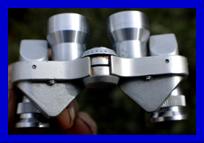
|
1924 Laboratorio di Precisione KL Italian Army 8x26 binoculars |
|
I.K.K. WWII Imperial Japanese Army 6 x 9.3 binoculars |
|
My Italian 8x26 serial number #305 1924 dated military binoculars were part of a small production run for the Italian Army by the Laboratorio di Precisione in Rome, a factory that produced Italian military equipment from sometime before 1906, until it was largely destroyed by 1943 Allied bombing. The 100 ° L.D. marking is 100 Lastrina Diastimotrica, which I believe is a measure of angle of view. |
|
E.K. WWII Imperial Japanese army 6 x 9.3 binoculars |
|
My WWII era I.K.K. made IJA/ Imperial Japanese Army 6 x 9.3 binoculars are typical of an approved pattern., and have a right ocular graticule/ ranging grid Though WWII I.K.K. binoculars in various powers are not uncommon, I have not yet identified I.K.K. (help welcome). The canvas case is typical late war pattern and is marked, as are the straps of case and binoculars (translation help please... miniature.binoculars@gmail.com). |
|
My WWII era E.K. made IJA/ Imperial Japanese Army 6 x 9.3 binoculars are typical of an approved pattern, and have a right ocular graticule/ ranging grid. These type binoculars are normally thought of as infantry & mobile artillery officers equipment. E.K. is Enomoto Kogaku Seiki K.K., a Japanese optics assembling manufacturer who produced a quantity of WWII Japanese military and ordinance optics, and who underwent a takeover merger with Fuji Photo Optical Co. in 1944 (and who contributed the Meibo name that Fuji subsequently used on some of their binoculars). |



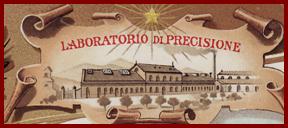
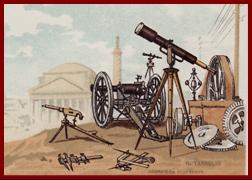
|
From my pre WWI Laboratorio di Precisione trade card |
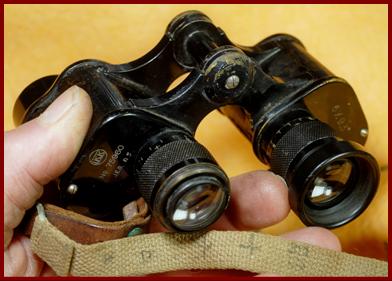
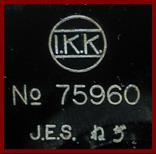

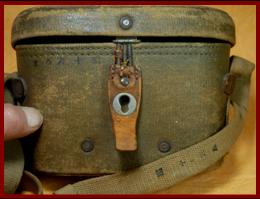
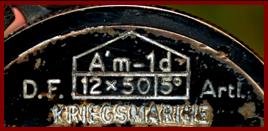
|
J.E.S. mark is Japan Engineering Standards # 13554 |
|
L di P logo |
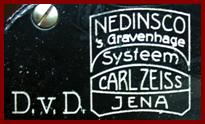
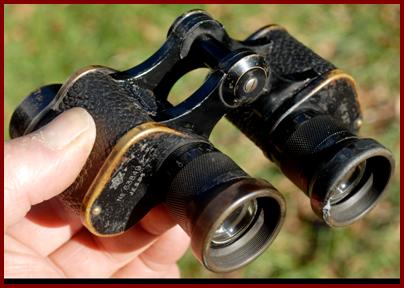
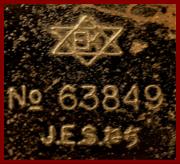
|
J.E.S. mark is Japan Engineering Standards # 13554 |
|
WWII 1941/1942 German Army 6x30 / DYM Runge und Kaulfu ß Fabrik f ü r Optik Dienstglas military binoculars |
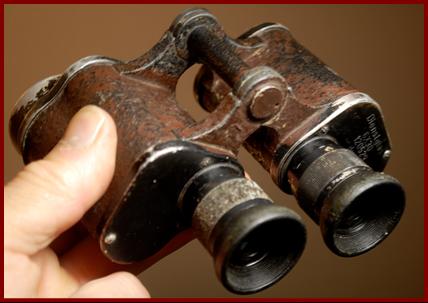
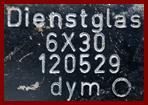
|
My WWII DYM coded 6x30 German military binoculars were made by Runge and Kaufus in Rathenow in 1942 or 1943 and have a H6400 strichplatte or right side graticule/ ranging grid. |
|
These binoculars carry the “O” cold weather grease code. Runge and Kaulfus made less binoculars than many other makers, so their WWII “DYM’ and “DM” marked binoculars are now encountered infrequently. |
|
1971 NS Polish Army IR Infrared Vision military binoculars |
|
The evolution of optical night vision commenced with using large light gathering objectives, then light transmitting efficiency lens coatings, then electronics age infra red spotlights and active optical detection, and then electronic light intensifiers, and then thermal imaging. All are still used in various combinations or in various applications. (IR is used more for CCTV night vision illumination these days in IR led form, and I use it a lot in that application). |
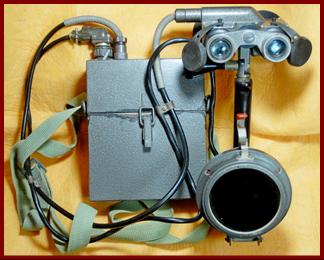
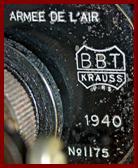
|
My 1971 Polish night vision set combines a hand held IR spotlight with active electronic IR binoculars, and battery box. The same components were more widely used as the Polish Army NS-71IR goggle system that mounted to a helmet. |
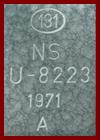
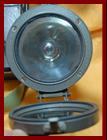
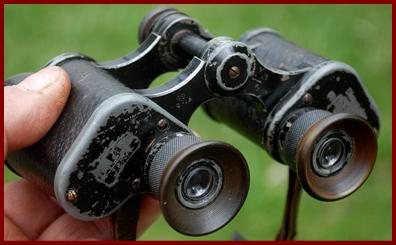

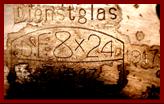
|
Nedinsco Finnish Army M55 SA Suomi Armeija Weapons Sight |
|
My Nedinsco made M55 weapons sight was made for the Finnish 55 S (55mm Sinko Vuodelta) Raikka Oy recoilless rifle system, nicknamed Nyrkka), and is SA / Suomi Armeija/ Finnish Army property marked. This weapons system was developed in the early 1950’s to replace the previously used German Panzerschrek and Panzerfaust anti tank/ bunker man pack weapons, and six were assigned to each motorized infantry battalion. It was phased out in the 1980’s by the M72 LAW and Apilas. With a radically arched trajectory an optical weapons sight was critical to hit probability. |
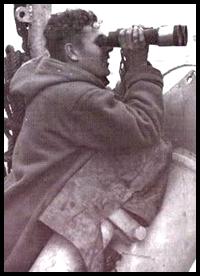

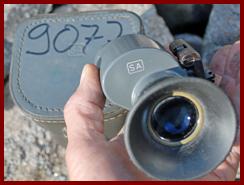
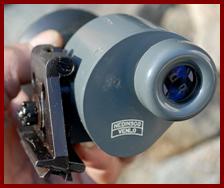


|
WWII Srb & Stys Fabrik Praiser Messinstrumente Dienstglas bmk 6x30 German Military binoculars |
|
My WWII 6x30 German dienstglas military binoculars carry the WWII bmk German wartime code of Srb & Sys Fabrik Praiser Messinstrumente of Prague zechoslovaka, and have a right ocular reticule/ ranging grid. The + marking indicates 1442 cold weather optical grease, and the blue triangle indicates use to -40 ° C (-40 ° F). In the winter due to cold fogging the camera lens; more frequent bad weather, and shorter hours of sunlight, I tend take more photos inside, which then attracts kitty assistance. |
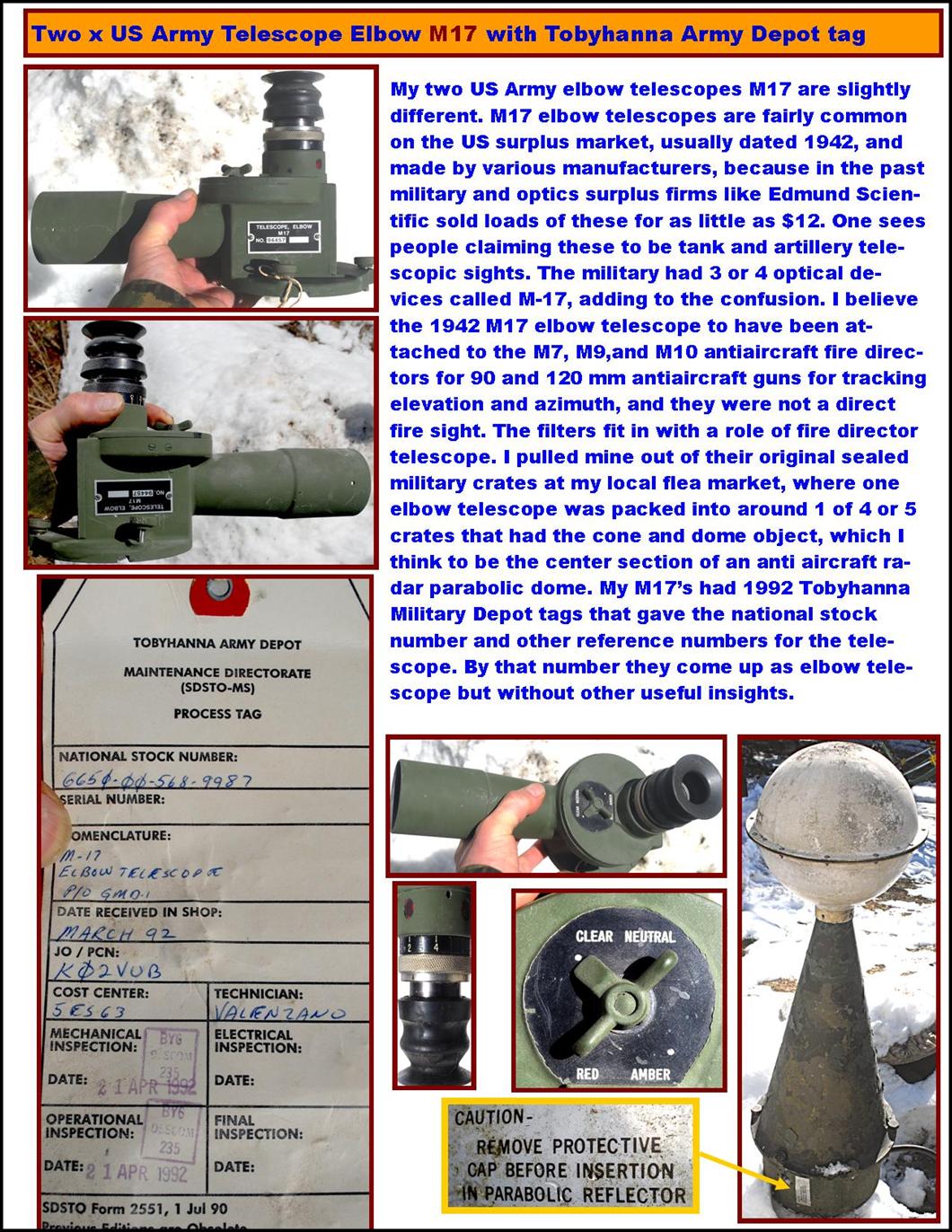
|
FOR GERMAN WWII BINOCULAR and OPTICAL MANUFACTURER CODES |

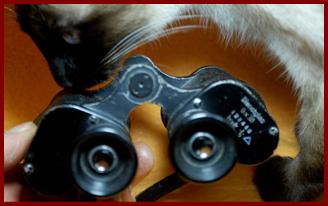
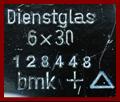
|
1946 Krasnogorsk Mechanical Plant ( Красногорский механический завод, Krasnogorskiy Mechanicheskiy Zavod, KMZ) Russian 6x30 Military binoculars |
|
At the end of WWII most binoculars manufacturers (including those in Russia, the UK, Canada and elsewhere that were essentially government operated) usually assembled the binoculars they could from the piles of wartime parts on hand. I think this is probably the case with my 1946 Russian Krasnogorsk state plant binoculars, which have a leather ocular cover, and do not have a graticule/ ranging grid. The Krasnogorsk factory was created in 1942 near Moscow, and still is in operation, and was known for manufacturing Zenit camera products. The “tomb” logo was used by KMZ during the years 1942-1949. |
|
CMC Paris French Made 8x26 binoculars UK MOD British Military issued marked binoculars |
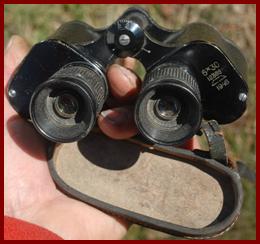




|
`Srb n Š tys Praha 6x30 VZ 9/13 Czech Army binoculars |
|
My Czech S rb n Š tys Praha (Prague) 6x30 polni kuk átko military binoculars carry the Czech army insignia. The firm was founded in 1919 as an optics repair and subcontract optic assembler. From 1924 Srb & Štys produced binoculars for the Czech army and military optics for the Turkish, Yugoslav and Greek armies. From 1934 they also produced military optics for the armies of Bulgaria, Denmark, France, India, Portugal and Spain. With the 1938 German occupation the company produced German pattern Dienstglas binoculars like my bmk binoculars below. The company was renamed Meopta np Ko š ire in 1945 and this collection also has Meopta brand military binoculars. Wikipedia info credit. |
|
1911-1917 Japanese Fujii Bros Patent 6 power Military binoculars |
|
Fujii Brothers started their Japanese binoculars production in 1911. Fujii Bros production ended in 1917 when they joined Tokyo Keiki Seisaku Sho and Iwaki Glass to form Nippon Kogaku (which later became Nikon), so my binoculars date 1911-1917. These binoculars have an anchor marking, which may be an acceptance mark? And many of the markings appear to have been first hand scribed in layout, and then stamped or inscribed more precisely, which I have not seen done previously. It and the 2098 serial number probably reflects quite early production. These were obtained in the USA and probably represent binoculars reused by the Japanese during WWII, and brought home by a US soldier. US soldiers always grabbed all binoculars they could in WWII, and brought or mailed them home. |
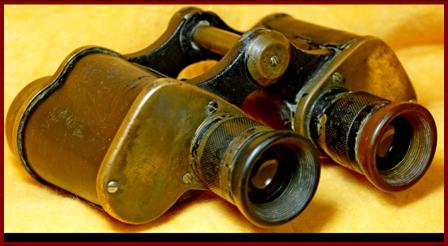

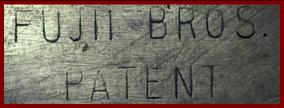

|
I cannot decipher the Japanese characters, and if a viewer can do so, I would appreciate the insight. miniature.binoculars@gmail.com |
|
WWII era Hensoldt Wetzlar 6x30 den norske haer Norweigian Army military binoculars |


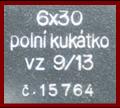

|
Czech lion Army crest |
|
US Frankford Arsenal marked 6x30 military monocular marked Property of United States Air Force |
|
WWII era Busch Solluxon 6x30 SA marked Suomi Armeija/ Finnish Army military binoculars |
|
From early 1918, with the creation of the Finnish state to 1939, and then 1941-1944 the Finnish Army/ Suomi Armeija and Germany had relations that included at times military training, direct combat support, and equipment contracts. My Busch of Rathenow Germany Soluxon 6x30 binoculars are SA (Suomi Armeija) Finnish army property marked. Busch also sold this model of binoculars to the Swedish Army. These binoculars have a leather restraint similar to that used by the German army. The case is also SA marked, and has a special compartment for yellow ocular filters. |
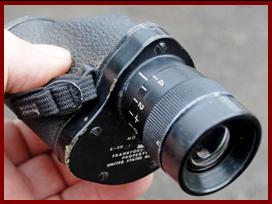
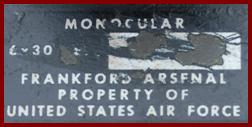
|
Frankford Arsenal was a 20 acre U.S. Army ammo manufacturing facility located in Philadelphia Pa. USA from 1816 to 1917, with as many as 20,000 employees. It expanded it’s range of manufacture to include both optical manufacturing and repair facilities. This 6x30 monocular was made for the US Air Force, presumably in WWII, probably for aircraft use, where weight savings was always an issue. |
|
I suspect that my UK MOD broad arrow military property marked French made 8x26 CMC Paris binoculars were originally interwar civilian owned binoculars that were subsequently donated for military use in WWII, as was a common government solicited practice in the UK and USA due to shortages. Many such non standard pattern but useful binoculars were issued in the UK to home guard units, irregular coast watching and aircraft spotting units, and other non first line units. My speculation is partly based on the fairly small electro pencil broad arrow markings and on the similar applied non original “property identification” or serial number. |
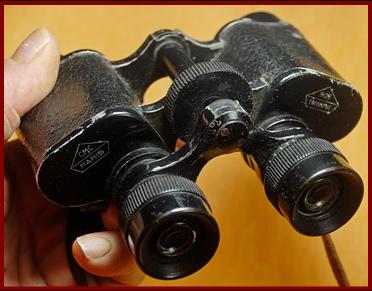

|
Military No2 Mk 1AFV Armored Vehicle Binocular Periscope |
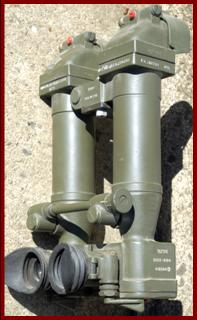
|
My No 2 Mk. 1/1 Binocular Periscopic A.F.V. (Armored Fighting Vehicle) was derived from WWII trench periscope designs, which permitted a magnified view without exposing your head to direct fire. This type UK periscope design (No 2 Mk1/1, 1/3 etc) is often observed marked A.K.& S, (UK optics maker A. Kershaw & Son) starting around 1948. While marked A.F.V. (Armored Fighting Vehicle) these were also intended for tripod, trench, and bunker AFV use. Israel bought a quantity of these from the UK, but this example was made in 1980, has Hebrew markings, has a really low #273 serial number. So I think this example may have been manufactured or assembled by Israel ? (speculation). |

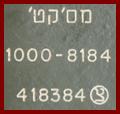
|
WWII era British or Canadian No 5 MK IV 7x military monocular |
|
My WWII Era British made monocular is a bit of an oddity. It is essentially the left hand ocular plate and ocular of the standard issue No. 5 Mk. IV military binoculars with standard markings (as made by Ross and NIL) attached to what would be the right hand prism and objective assembly on binoculars. I have seen plenty of binoculars which had one side damaged and were salvaged into monoculars by sawing off the ocular and objective pivot frames, but this is not that. What would be the ocular frame on binoculars on this has is a different factory cast aluminum part with double strap hangers, and likewise what would be the objective frame on binoculars is a factory cast ring and not a sawed off frame. |
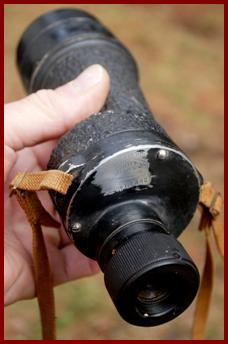
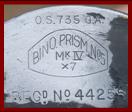
|
Like the Busch firm example above, Hensoldt of Wetzlar Germany actively pursued foreign export military WWII needs monopolizing production capacity. The marking Den norsk haer on these binoculars means the Norwegian army in Norwegian. The right ocular has a graticule/ strichtplatte/range grid, and leather ocular cover retained by leather covered spring mechanism similar to case cover straps. |
|
1918 W. Watson & Sons Ltd London & Barnet Sunica Intense private purchase British 8x military binoculars marked “ Made Expressly for Richardson Adie & Co 99 Princess St Edinburgh ” |
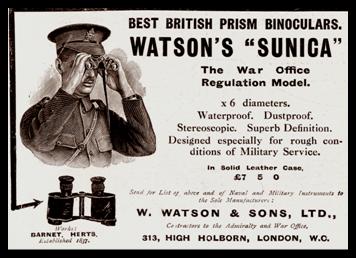
|
My WWI W. Watson & Sons LTD London & Barnet binoculars are an example of applying research to a pair of binoculars. A 1915 ad documents the Sunica model as being a British war department regulation model also sold for officer private purchase in WWI. Research shows the Watson Barnet location existed 1914-1939, and research shows that Richardson Addie & Co of Edinburgh Scotland (Optician and Cutlers) existed 1918-1933. Therefore these binoculars were almost certainly produced in 1918, the last year of the war, and sold in Scotland to an enlisting officer, probably but not necessarily in a Scottish unit. |
|
1915 ad. Grateful educational non commercial use credit to thelothianblogspot.com |
|
I obtained these in Australia. Research shows that after WWI the British government offered free transportation for ex-servicemen to migrate to Australia, and 17,000 did by 1922, including from the depressed Scotland economy of that time. |
|
1916 W. Watson & Sons Ltd. #4 MKIII WWI British army artillery sighting telescope used on the 13 pounder and the 18 pounder quick firing cannons |
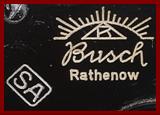
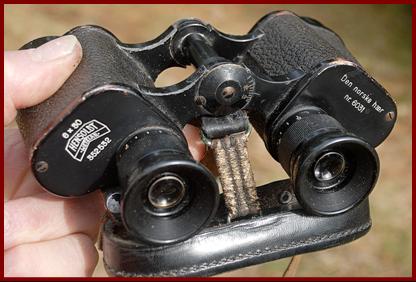
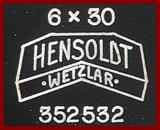

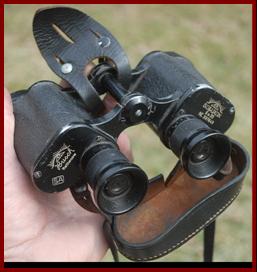
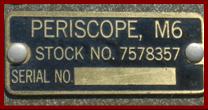
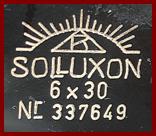

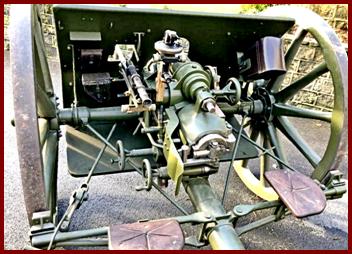

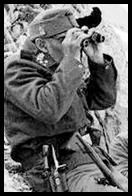
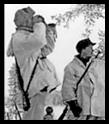
|
Leather ocular cover retained by an odd leather covered spring strap similar to case cover straps. |

|
In WWI W. Watson & Sons was sub contracted to manufacture my #4 MKIII optical sighting telescope that was part of the ROF sighting and elevating mechanism on 13 and 18 pounder quick firing artillery pieces. WWI field artillery optics are usually somewhat uncommon survivors, due to exterior harsh environments of the war fronts and the attrition rate. |
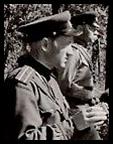
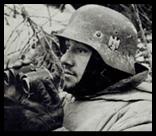
|
WWI era German made 7x US Navy Contract Binoculars |
|
Norwegian Army military binoculars Hensoldt Wetzlar 6x30 |
|
Japanese navy military binoculars Fuji Bros 6x3 |
|
EK Japanese Army military binoculars 6x |
|
WWI Talbot Reel and Manufacturing Co. US Army Signal Corps Binoculars |
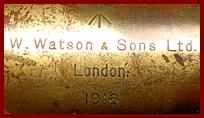
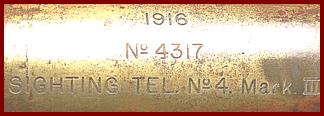

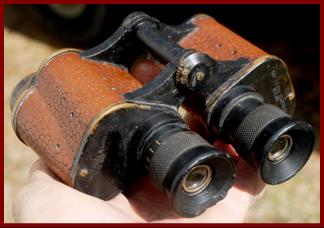
|
My WWI US Army Signal Corps binoculars are another example of U.S. industrial flexibility during wartimes. Talbot Reel and manufacturing Co. made fishing reels and were located in Kansas City Missouri USA from 1913-1920, and obviously made contract binoculars during WWI for the US army. |


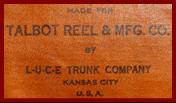

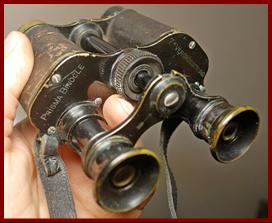
|
Though not brand marked, I believe my PRISMA BINOCLE (prism binoculars) 7x VERGROSSERUNG (7x enlargement) binoculars by their markings and configuration to have been made by the German manufacturer Emil Busch for a U.S. Navy contract, based on a fairly standard model of Busch. (Also U.S. military purchase documentation of my 1916 Busch US Army signal corps binoculars in OTHER BINOCULARS #7 ). The “Eagle”logo on the case buckle is Eagle Lock of Terryville Ct that made the latch. |


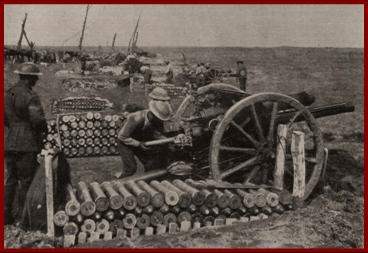
|
1911-1917 Japanese Fujii Bros Tokyo 6 power Military binoculars, with UK Army Property Markings |
|
Japan was an ally of the UK during WWI, and because the UK was scrambling for equipment to equip their hastily staged 1914 mobilization, and because Japan did not have significant mobilizations in WWI, Japan is documented to have supplied some military equipment to the UK, including Japanese Arisaka rifles which were issued to some UK troops on a temporary substitute standard basis until Lee Enfield rifle production caught up. Fujii Brothers produced Japanese binoculars from 1911 to 1917. My Fujii Bros. Tokyo binoculars serial no. 75189 have WWI era broad arrow UK British Ministry of Defense Army or Navy property markings. |

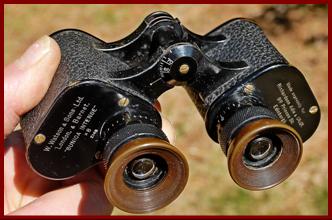


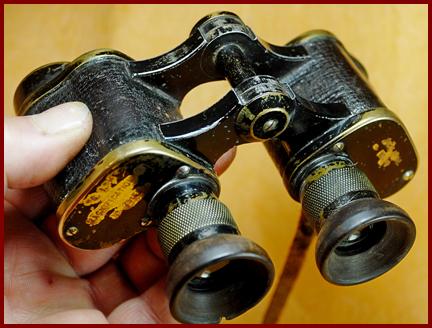

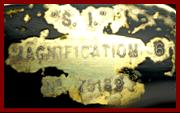


|
WWI G. Rodenstock Munchen Dienstglas D.F.03 6x24 German Military officers binoculars |
|
My G. Rodenstock D.F. 03 binoculars are standard WWI German military officers binoculars. “ K. B. Dienst .” is the abbreviation of K ö niglich Bayerisch Dienstglas” or Royal Bavarian {military} binoculars, and “ D.F. 03 ” is “Doppel Fernrohrglas 03”, or Double Telescope {model 03}, a military model produced starting around 1908 by many German binocular makers in WWI, with Rodenstock producing these in 1917-1918 (credit Hans Seeger). As the war progressed and model 08 non prismatic binoculars were issued to non commissioned officers, these were normally issued to infantry officers. |
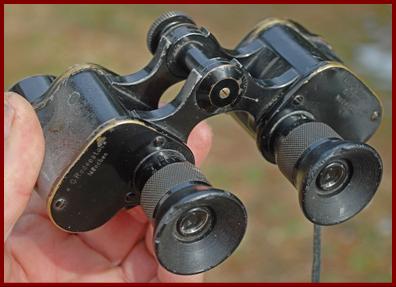

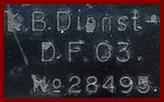
|
G.Rodenstock is Optisches Institut G. Rodenstock, founded in 1877 |
|
Watson Baker Co Ltd. 6x30 No.2 Mk I British military pattern binoculars sold to US civilian market |
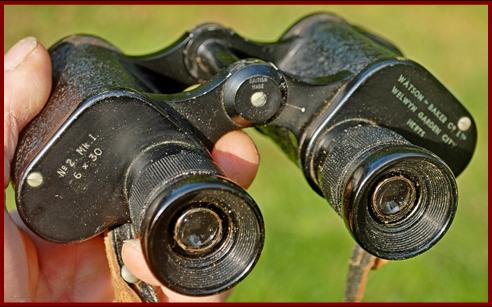



|
My Watson Baker Co. ltd No.2 Mk. 1 6x30 binoculars represent British WWII military pattern binoculars produced for the export USA or Canadian civilian market right after WWII probably in the last half ot the 1940’s, with a war pattern left panel markings and more consumer oriented left panel markings, and export “British Made” marking. |